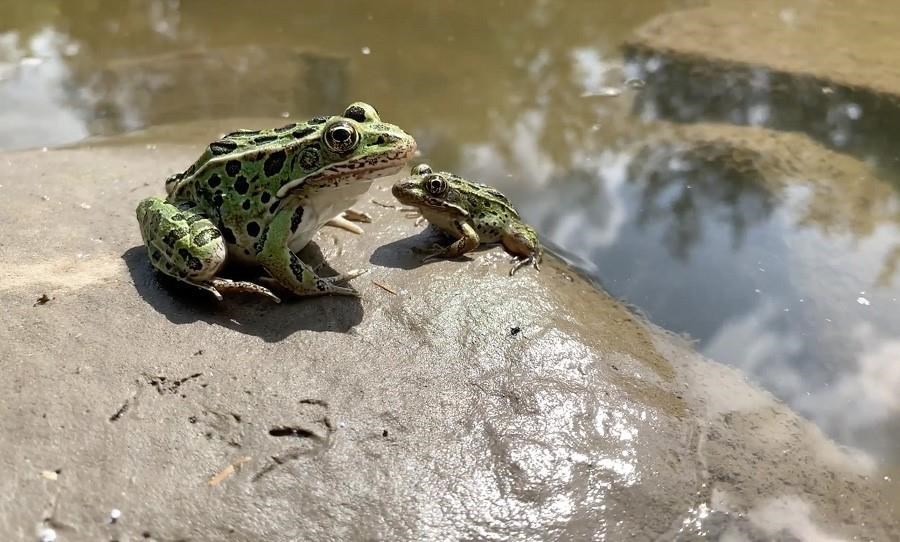CALGARY — More than 1,900 tadpoles of the endangered northern leopard frog have been released into the wild in the last few months.
The Wilder Institute/Calgary Zoo said it has been working with other conservation groups, governments and zoos in Western Canada to breed, translocate and release the frogs into some wetlands near Kimberley, B.C.
"We were able to release a bunch of tadpoles at our new introduction site," Lea Randall, an ecologist at the zoo, said Thursday. "Unfortunately we weren't able to release as many as we would have liked because it was a poor breeding season in the wild.
"The good news is that the survival of our tadpoles to reach metamorphoses has been through the roof this year."
The northern leopard frog is found in a few different parts of Canada — in the East, the Western Boreal Forest and Prairies, and in the Rocky Mountains. The Rocky Mountain population in B.C. is endangered.
The frog plays an important role in its ecosystem, where it transfers nutrients between the land and water.
The zoo said the recovery program for the northern leopard frog is not an easy task.
Biologists in the Creston Valley, which has the only remaining population of the frogs in B.C., started listening in the early spring for the deep chuckles and grunts of the males trying to mate with females.
They then looked for egg masses and protected them from predators using mesh enclosures.
Some of the tadpoles were released at the site, others were moved to the Kimberley reintroduction site and some were taken to breeding facilities such as zoos for release later in the season.
Randall said the tadpoles in the Kimberley area were released in May and will be monitored into the fall.
"The main reason we want to have a second site is … you don't have all your eggs in one basket," she said. "The other reason is we have invasive bullfrogs that are moving up from northern Idaho (to the Creston Valley).
"Bullfrogs can be extreme predators on leopard frogs and they can also out-compete them and they can also harbour diseases that can be transmitted to leopard frogs, so it's often bad news."
This report by The Canadian Press was first published Aug. 18, 2022.
Colette Derworiz, The Canadian Press


